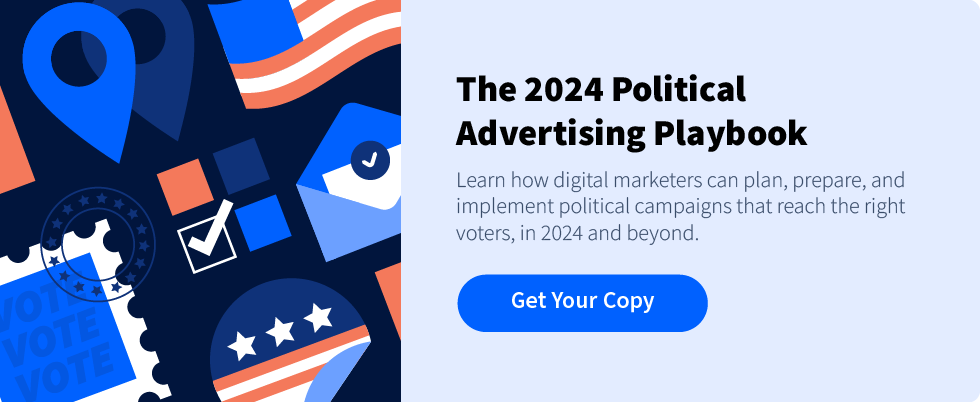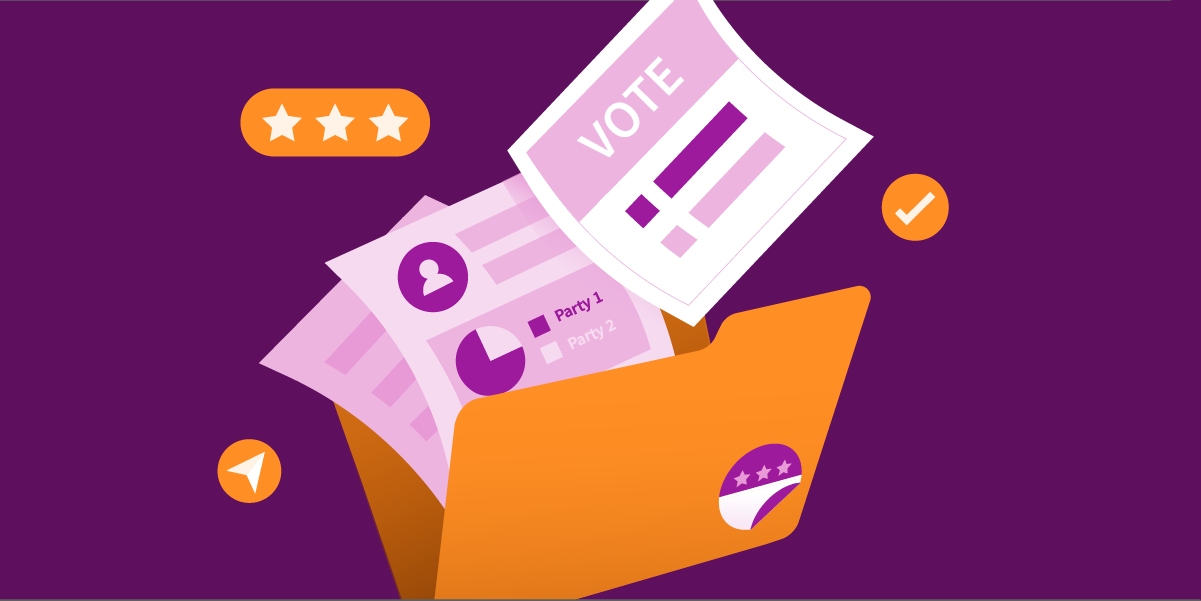Digital ad spend on political campaigns has been steadily growing, and the 2024 US presidential election is projected to continue the growth trend. One reason for this? Digital advertising delivers speed and scale.
Speed of campaign planning and execution can make the difference in allowing political campaigners to take initiative during the defining moments of the campaign life cycle. With programmatic, advertisers can influence voters by reaching them where they are—which is increasingly online.
Read on to learn the benefits of programmatic for political campaigns, and walk away with 6 programmatic tactics that will help get your campaigns live quickly, and drive results.
Benefits of Programmatic for Political Campaigns
There are many reasons to run digital marketing political campaigns. Programmatic allows you to connect with voters across all of their devices, capturing their attention wherever they are online. Here are some of the other benefits of leveraging programmatic for your political campaigns.
Speed
Programmatic advertising leverages machine learning and artificial intelligence (AI) together to streamline advertising efforts by making decisions at scale and rapidly responding to pivots in how people consume information.
Greater Reach
Programmatic offers huge potential audience reach, as well as incremental reach, because most users are online. In the US, there are 312 million active internet users, and these users are all potential voters that you can target.
Granular Targeting
Speak directly to your ideal voters for any given goal, by narrowing down the pool that you target. You can target by geolocation, by IP address, or even by context to ensure you reach voters who are receptive to your messaging.
Effective Reporting
With programmatic, you can see real-time reporting and data. This way, you can measure exactly how your political campaign creatives, or overall targeting, performs shortly after your political campaign is launched. Then, adjust accordingly for the best results.
6 Tactics for Your Political Campaign Strategy
Let’s dive into 6 programmatic tactics that will help get your campaigns live quickly, and drive results.
1. Plan Your Campaign With Forecasting
With the 2024 US presidential election around the corner, you don’t have time to waste. Use campaign forecasting to better understand how your campaign is going to scale and perform before you spend a single dime.
This way, you can plan your campaign not just quickly, but effectively. Forecasting will give you the ability to identify the highest-value opportunities, and ultimately, reach potential voters across an optimal media mix.
Since forecasting is designed to help you understand how well your campaign will scale before it’s launched, it’s best to use this programmatic feature in the early planning stages of your political campaigns.
If you know what your budget is, and you know what locations and voters you’d like to target, then you’re in the perfect position to use this tool.
Forecasting will provide you the insights you need to get your campaign up and running quickly. By predicting how your campaign will scale ahead of time, you can make sure you’re planning the parameters that will help you reach the right audience, and maximize the impact of your ad dollars.
2. Use Geotargeting to Reach the Right Audience
Geotargeting delivers content to an audience using the geographic location information of the recipient. Some programmatic platforms offer targeting by zip or postal code. Within the US and Canada, you can upload a list of codes to reach users.
Or, you can target specific addresses or lat or long coordinates. Customize your radius down to the mile or kilometre to target users in mobile in-app environments. Both of these targeting methods enable you to reach your audience with precision.
Geotargeting is a key feature in political campaigns because it enables you to focus your efforts on specific regions. This means political campaigns can zero in on voters according to their location, which helps reduce the likelihood of wasting time and ad dollars on people outside of your target voting district.
3. Leverage Lookalike Audiences
Tapping into lookalike audiences enables you to reach potential users online who are likely to share similar interests and behaviours with your existing users.
Using a pixel on your site, you can tag site visitors, and then leverage pieces of information about those users to target individuals that exhibit the same behaviour as those you’ve tagged.
You can also build a lookalike audience around your CRM list to increase reach, or suppress a list if that’s needed. With lookalike audiences, you can quickly expand your reach to new people who are likely to have an interest in your campaign and platform, even if they aren’t already familiar with it.
It’s a great way to build awareness around your political campaign, and engage with new prospects who have the potential to identify with your political messaging.
4. Measure Candidate Popularity
You can use persuasion lift to measure candidate popularity and voter persuasion based on ads that have been served. Run a campaign that interactively polls users’ perceptions of your client and the other candidates.
You can then sort your audiences more accurately, and continue the conversation by delivering different messages depending on the response. Campaign reporting will include data that covers survey results, geo breakdown, audience breakdown, creative breakdown, creative impact, and more.
5. Target Using Contextual Advertising
With consumer ad preferences and privacy-driven changes evolving, marketers are increasingly turning to contextual advertising. Rather than targeting ads based on user behaviour, contextual advertising targets ads based on the environment in which the ad appears.
This targeting strategy helps you reach users while they are in a particular frame of mind, which is indicated by the content they are consuming.
With contextual ads, you can target niche phrases that are related to a campaign’s platform, or to the political concerns of your target audience. In the upcoming election, leverage contextual ads to reach politically engaged voters who are receptive to political messaging.
6. Use Retargeting to Re-Engage Voters
You can use a cross-channel retargeting strategy to increase the likelihood that your political messaging reaches your audience. Retargeting enables you to deliver ads to a user based on their previous intent-based actions on the web. It’s an important tactic for re-engaging a voter who has shown interest in your political platform.
Introducing retargeting into your political advertising plan will help to drive engagement and conversions. With a strong retargeting strategy, you can ensure your campaign performs by communicating a strong call to action to your potential voters.
With high reach and frequency across your target universe, leveraging retargeting as part of a multi-channel strategy will help your messaging reach the voters who matter most to your campaign.
Kickstart Your Political Campaign Strategy
With political election cycles, speed is everything. Look for programmatic features that will enable you to plan and implement your campaigns fast and effectively.
The right programmatic platform will have features and support that will help you go from the planning stage, to launch, and optimization smoothly, and with speed in mind.
Want to run exceptional political campaigns? Request a demo to learn more about StackAdapt.






